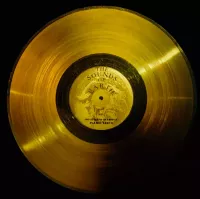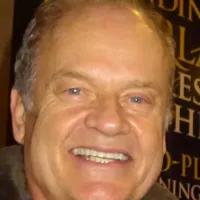Jean-Luc Godard was a highly influential French-Swiss film director, screenwriter, and critic, a key figure in the French New Wave. His experimental approach revolutionized filmmaking through innovations in narrative, sound, camerawork, and continuity. Godard's work challenged conventional cinematic norms and cemented his place as one of the most important filmmakers of the post-war era.
December 1930: Jean-Luc Godard Born
On December 3, 1930, Jean-Luc Godard was born in the 7th arrondissement of Paris to Odile (née Monod) and Paul Godard. His parents were from wealthy Franco-Swiss Protestant families.
1936: Foundation of the Cinémathèque Française
In 1936, Henri Langlois and Georges Franju founded the Cinémathèque Française, which later became an important venue for film enthusiasts like Jean-Luc Godard.
1946: Introduction to Cinema
In 1946, Jean-Luc Godard's interest in cinema was sparked by reading André Malraux's essay 'Outline of a Psychology of Cinema' and the relaunch of La Revue du cinéma.
1947: Establishment of Ciné-Club du Quartier Latin (CCQL)
Around 1947 or 1948, the Ciné-Club du Quartier Latin (CCQL) was founded, led by Maurice Schérer. This club played a key role in the intellectual development of film enthusiasts like Jean-Luc Godard.
1948: Establishment of Ciné-Club du Quartier Latin (CCQL)
Around 1947 or 1948, the Ciné-Club du Quartier Latin (CCQL) was founded, led by Maurice Schérer. This club played a key role in the intellectual development of film enthusiasts like Jean-Luc Godard.
1948: Failure of Baccalauréat Exam
In 1948, Jean-Luc Godard failed his baccalauréat exam and subsequently returned to Switzerland, marking a setback in his formal education.
1949: Return to Paris
In 1949, after passing the baccalauréat retest, Jean-Luc Godard returned to Paris and registered for a certificate in anthropology at the University of Paris (Sorbonne), though he did not regularly attend classes.
1950: Ciné-Clubs Gaining Prominence
Around 1950, in Paris' Latin Quarter, ciné-clubs (film societies) gained prominence, becoming regular haunts for Jean-Luc Godard. He frequented the Cinémathèque Française, Ciné-Club du Quartier Latin (CCQL), Work and Culture ciné club, and others.
1950: Founding of La Gazette du cinéma
In 1950, Jean-Luc Godard, along with Maurice Schérer (Éric Rohmer) and Jacques Rivette, founded the short-lived film journal La Gazette du cinéma, publishing five issues.
1951: Publication in Cahiers du Cinéma
In 1951, Jean-Luc Godard was among the first younger critics from the CCQL/Cinémathèque group to be published in Cahiers du Cinéma, a seminal publication on cinema.
January 1952: Review of No Sad Songs for Me
In January 1952, Jean-Luc Godard's review of Rudolph Maté's American melodrama, No Sad Songs for Me, was featured in Cahiers du Cinéma.
September 1952: Publication of Defence and Illustration of Classical Découpage
In September 1952, Jean-Luc Godard's "Defence and Illustration of Classical Découpage" was published, where he defended the shot-reverse shot technique and attacked an earlier article by André Bazin.
1952: Return to Switzerland
In the fall of 1952, Jean-Luc Godard left Paris and returned to Switzerland, residing with his mother in Lausanne.
April 1954: Death of Godard's Mother
In April 1954, while working as a telephone switchboard operator at the Grande Dixence Dam, Jean-Luc Godard received a call relaying the news of his mother, Odile Monod, dying in a scooter accident.
1955: Making of Une femme coquette
In 1955, while continuing to work for Cahiers, Jean-Luc Godard made Une femme coquette, a 10-minute short film in Geneva, marking an early step in his directorial career.
January 1956: Return to Paris
In January 1956, Jean-Luc Godard returned to Paris, but his ambitious plan to create a feature film based on Goethe's Elective Affinities was unsuccessful.
1956: Seberg in Saint Joan
In 1956, Jean Seberg became famous after Otto Preminger chose her to play Joan of Arc in his film Saint Joan.
1957: Directing All the Boys Are Called Patrick
In the autumn of 1957, Jean-Luc Godard directed All the Boys Are Called Patrick from a script by Éric Rohmer, produced by Pierre Braunberger, as part of a planned series of short films.
May 1958: Setting of Le petit soldat
The film Le petit soldat begins on 13 May 1958, the date of the attempted putsch in Algeria, and ends later the same month. The film revolves around Bruno Forestier, a photojournalist involved with a right-wing paramilitary group, and his relationship with Veronica Dreyer.
December 1958: Reporting from the Festival of Short Films
In December 1958, Jean-Luc Godard reported from the Festival of Short Films in Tours, expressing admiration for the work of Jacques Demy, Jacques Rozier, and Agnès Varda and solidifying friendships.
1958: Bonjour Tristesse
In 1958, Jean Seberg starred in Otto Preminger's adaptation of Bonjour Tristesse. Her performance was not well-received by critics, but Truffaut and Godard disagreed with the negative reviews.
1959: Seeking Funds for Feature Film
Jean-Luc Godard traveled to the 1959 Cannes Film Festival to seek funds from producer Georges de Beauregard for his feature film project, eventually securing financing from a film distributor, René Pignières.
January 1960: Jean Vigo Prize
In January 1960, Godard won the Jean Vigo Prize for Breathless. The prize was awarded "to encourage an auteur of the future".
1960: Shooting Le petit soldat
In 1960, Godard shot Le petit soldat (The Little Soldier), which starred Anna Karina, who had very little acting experience. Godard and Karina became a couple by the end of the shoot.
1960: Global Acclaim for Breathless
In 1960, Jean-Luc Godard received global acclaim for his film Breathless, which became a milestone in the French New Wave movement.
1960: Release of Breathless
In 1960, Jean-Luc Godard released Breathless (À bout de souffle), starring Jean-Paul Belmondo and Jean Seberg, showcasing the French New Wave style and innovative film techniques.
1961: A Woman Is a Woman Release
In 1961, Godard released his first color film, A Woman Is a Woman, starring Anna Karina and Belmondo. The film was intended as an homage to the American musical and had autobiographical elements related to Godard's relationship with Anna Karina.
1962: Vivre sa vie Release
In 1962, Godard released Vivre sa vie (My Life to Live), starring Anna Karina as Nana, a mother and aspiring actress who becomes a streetwalker.
1962: Release of Vivre sa vie
In 1962, Jean-Luc Godard released Vivre sa vie, starring Anna Karina. This collaboration with Karina is considered highly influential in cinema history.
1963: Le Mepris Release
In 1963, Godard released Le Mépris (Contempt), starring Michel Piccoli and Brigitte Bardot. The film follows a screenwriter commissioned to rewrite the script for an adaptation of Homer's Odyssey.
1964: Anouchka Films and Bande à part
In 1964, Godard and Anna Karina formed a production company called Anouchka Films. That same year, Godard directed Bande à part (Band of Outsiders), starring Karina, which he described as "Alice in Wonderland meets Franz Kafka."
1964: Une femme mariée Release
In 1964, Godard followed Band of Outsiders with Une femme mariée (A Married Woman). The film was a deliberate, toned-down picture shot in four weeks, and reflected Godard's engagement with contemporary thinking and his loss of faith in Hollywood styles.
1964: A Band Apart film release
In 1964, Godard released the film A Band Apart. Quentin Tarantino later named his production company after it.
1964: Release of Bande à part
In 1964, Jean-Luc Godard released Bande à part, starring Anna Karina. This collaboration with Karina is considered highly influential in cinema history.
1965: Alphaville and Pierrot le Fou Release
In 1965, Godard directed Alphaville, a blend of science fiction, film noir, and satire, and also released Pierrot le Fou, which featured Belmondo. Godard described Pierrot le Fou as being about the violence and loneliness that lie so close to happiness today.
1965: Release of Pierrot le Fou
In 1965, Jean-Luc Godard released Pierrot le Fou, starring Anna Karina. This collaboration with Karina is considered highly influential in cinema history.
1965: Pierrot le fou and the Marxist Critique
In 1965, in Pierrot le fou, Belmondo played on the word 'scandal' and the 'freedom' that the Scandal girdle supposedly offered women, in the context of a Marxist critique of commodification, of pop art derision at consumerism, and of a feminist denunciation of women's false 'liberation'.
1966: Made in U.S.A Release
In 1966, Godard released Made in U.S.A, inspired by Richard Stark's The Jugger and American Noir films. The film stars Anna Karina and features a cameo by Marianne Faithfull.
1966: Masculin Féminin shot in Sweden
In 1966, Godard's movie Masculin Féminin was shot in Sweden, Ingmar Bergman found it mind-numbingly boring.
1967: Loin du Vietnam Participation
In 1967, Godard participated in the anti-war project Loin du Vietnam, which consisted of seven sketches directed by multiple directors. Godard used stock footage from La Chinoise for his contribution.
1967: La Chinoise Release
In 1967, Godard released La Chinoise. The film focused on a group of students and engaged with the ideas coming out of the student activist groups in contemporary France.
1967: Two or Three Things I Know About Her Release
In 1967, Godard released Two or Three Things I Know About Her, starring Marina Vlady, who portrays a woman leading a double life. The film is considered to be "among the greatest achievements in filmmaking."
May 1968: May 1968 Events Foreshadowed
Released just before the May 1968 events, Godard's film La Chinoise is thought by some to have foreshadowed the student rebellions that took place.
May 1968: Beginning of the Militant Period
The period from May 1968 into the 1970s marks the beginning of Godard's "militant" or "radical" period, characterized by revolutionary rhetoric in his films and public statements.
1968: Cannes Film Festival Shutdown
Inspired by the May 1968 upheaval, in 1968, Godard, along with François Truffaut, led protests that shut down the Cannes Film Festival in solidarity with the students and workers.
1969: Formation of the Dziga Vertov Group
In 1969, Jean-Luc Godard, influenced by Marxist philosophy, formed the Dziga Vertov Group with other radical filmmakers to create political works.
1970: Middle East Trip
In 1970, Godard traveled to the Middle East to make a pro-Palestinian film, but the project was not completed. The footage was later used in the 1976 film Ici et ailleurs.
1976: Release of Ici et ailleurs
In 1976, Godard released the film Ici et ailleurs, which included footage from a pro-Palestinian film project that he did not complete in 1970.
1980: Brecht's influence until 1980
Until 1980, Bertolt Brecht's influence is keenly felt through much of Godard's work, when Godard used cinematic expression for specific political ends.
1981: Godard's statement on Moses
In 1981, Godard made a statement on television where he said "Moses is my principal enemy...Moses, when he received the commandments, he saw images and translated them. Then he brought the texts, he didn't show what he had seen. That's why the Jewish people are accursed."
2001: Ebert recalls early days as a critic
In 2001, Ebert recalled his early days as a critic and mentions how much people talked about Godard after Pulp Fiction.
2002: Godard Ranked Among Top Directors
In a 2002 Sight & Sound poll, Jean-Luc Godard was ranked third among the critics' top ten directors of all time, recognizing his significant contributions to cinema.
2010: Godard Receives Honorary Academy Award
In 2010, Jean-Luc Godard was awarded an Academy Honorary Award, acknowledging his lasting impact and achievements in the film industry.
2010: Anti-Semitism Accusations
In 2010, in the lead-up to the presentation of Godard's honorary Oscar, an article in The New York Times drew attention to accusations that Godard was an anti-Semite.
2012: Tout Va Bien listed as a favorite film
In 2012, political activist, critic and filmmaker Tariq Ali listed Godard's film Tout Va Bien as one of his ten favorite films of all time in the Sight and Sound critics' poll. American film critic Armond White listed Godard's film Nouvelle Vague as one of his top ten favorite films in the same poll.
September 2022: Jean-Luc Godard's Death
Jean-Luc Godard, the influential French-Swiss film director, screenwriter, and critic, passed away on September 13, 2022.
2022: Godard's films included on Sight and Sound list
In 2022, four of Godard's films are included on the Sight and Sound list of 100 Greatest Films: Breathless (38), Le Mépris (54), Histoire(s) du cinéma (78) and Pierrot le Fou (85).
Mentioned in this timeline

Quentin Tarantino is a highly influential American filmmaker actor and...

The Catholic Church the largest Christian church globally with over...

Jane Fonda is a celebrated American actress and activist renowned...
France officially the French Republic is primarily located in Western...

Music is a cultural universal involving the arrangement of sound...

Books are a means of storing information as text or...
Trending

7 months ago Jenny McCarthy Reveals Beauty Secrets at 52 and Discusses Couples Therapy

19 days ago Megan Thee Stallion Rejects 'Call of Duty' Role Due to Trauma.

7 months ago Donte DiVincenzo's impactful performance and confidence boost Timberwolves in Western Conference Finals Game 1.
Christopher Rafael Morel is a Dominican professional baseball player who currently plays third base for the Tampa Bay Rays His...
Marcus Spears nicknamed Swagu is a former NFL defensive end who played nine seasons mainly for the Dallas Cowboys He...

7 months ago George Wendt, 'Cheers' Star, Remembered Fondly After Death; Sudeikis Shares Memory
Popular

Candace Owens is an American conservative political commentator and author...

Ilhan Omar is an American politician currently serving as the...

XXXTentacion born Jahseh Dwayne Ricardo Onfroy was a controversial yet...
Matt and Ross Duffer known as the Duffer Brothers are...

Tom Cotton is an American politician and Army veteran currently...
The Kennedy Center Honors are annual awards recognizing individuals and...
